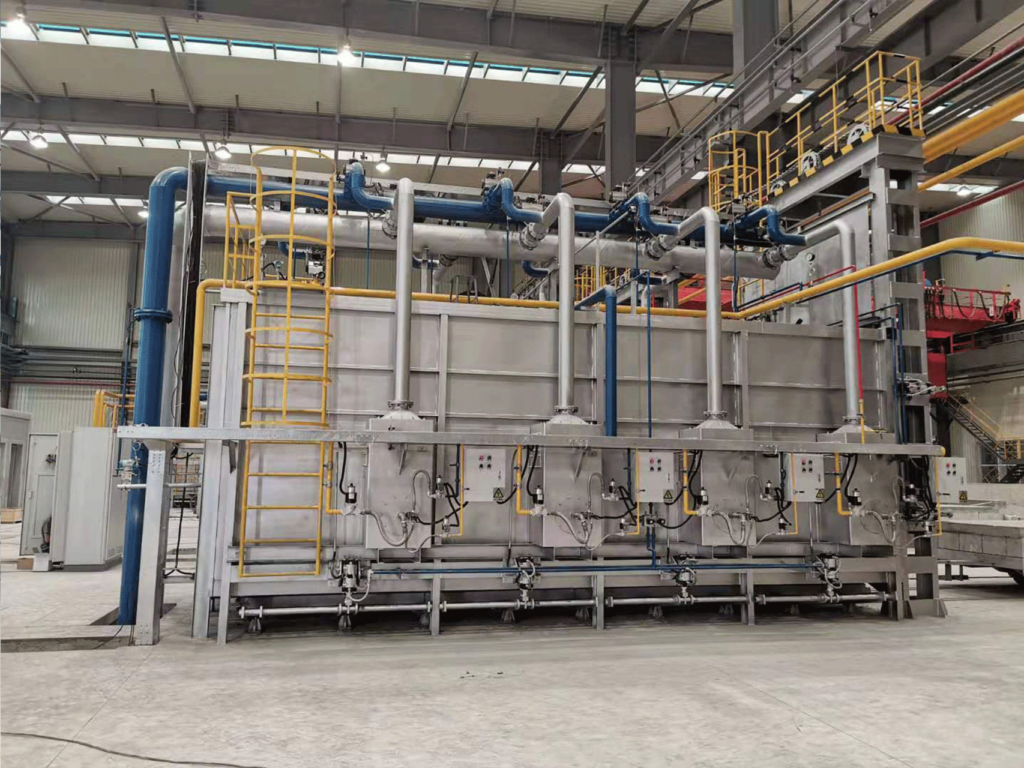What is annealing in furnace? Furnace annealing is a thermal treatment that alters the mechanical properties of metals. Furnace annealing is done in a controlled atmosphere (or vacuum) at a specific temperature and time to obtain certain desired properties in metals. Furnace annealing can be performed on both ferrous and non-ferrous alloys. Steel is the most common metal treated by the furnace annealing process.
What’s An Annealing In Furnace?
What is annealing in furnace? Annealing is a heat treatment process used to soften and strengthen the metal. The purpose of annealing is to produce a soft, ductile metal with maximum toughness and corrosion resistance. Annealing can also be used on nonferrous materials, such as copper and brass.
A Jiangsu YINUO annealing furnace is a specialized piece of equipment used for annealing purposes. It consists of an oven with a chamber that can be heated to high temperatures by electricity or gas burners. The oven contains multiple racks that hold the pieces being annealed. These racks are designed so that the pieces can be placed in different positions throughout the oven chamber during the heating process, allowing for optimal results from each piece being treated.
The annealing process begins by heating the metal until it reaches its melting temperature, at which point it is removed from the furnace and allowed to cool slowly (the cooling rate must be very slow). This allows impurities within the metal to migrate outwards toward its surface where they will form crystals (this process is known as solidification).

What Does Furnace Annealing Do?
Annealing is a process that softens the metal, making it easier to work with. A furnace is used to heat the metal up to a specific temperature for a certain amount of time. The furnace has sensors inside to monitor the temperatures, so you don’t have to worry about damaging your metals.
Annealing is done after cold working, which is any process that changes the shape or size of your metal. This includes bending it, rolling it, or punching holes in it. Annealing will take place after any cold working process.
The purpose of annealing is to relieve internal stresses caused by forming operations such as rolling or extrusion. The internal stresses are relieved by heating the material above its recrystallization temperature followed by cooling slowly enough so that no new grain boundaries form during cooling (i.e., quenching).
Furnace Annealing- What Is It and How Does It Work?
Furnace Annealing is a process that is used to change the physical and mechanical properties of metal by heating it to a temperature high enough for the microstructure to be changed. This process can also improve surface finish, hardness, ductility, and toughness in many materials.
The goal of annealing is to reduce internal stress within the metal. This can be done by heating the metal above its recrystallization temperature (Tc) and then cooling it slowly. For example, if you heat your metal to 2,000°C (3,600°F) and let it cool naturally, you will have to anneal it as long as there were no defects introduced during heating or cooling.
The purpose of annealing is to relieve internal stresses within a material caused by machining, forging, or welding. These stress relief methods are typically performed on ferrous metals such as steel and cast iron, although nonferrous metals such as copper and aluminum can also be annealed.
What Is Annealing When Working In A Furnace And How Does It Help?
Annealing is a process of heating and cooling metal that is used to change its physical properties, such as hardness, ductility, and tensile strength. The process is performed to soften the metal so that it can be worked or formed into a desired shape.
Annealing can be done by heating the metal until it turns into liquid form and then slowly cooling it down in air or water. This process helps to remove internal stresses in the metal caused by the machining or forming operations.
The most common types of annealings are soft annealing and hard annealing. Soft annealings are used to decrease the hardness of metals while hard annealings are used to increase the hardness of metals like steel and titanium alloys.
An important thing about annealing is that it must be done at specific temperatures for specific lengths of time depending on the material being worked on because there are different ranges for each type of material that needs to be worked on for proper results.
YINUO Annealing Furnace: Your Best Business Partner
YINUO offers an extensive range of annealing furnaces for annealing and tempering. These furnaces are designed for a variety of heat treatment applications, including high-temperature heat treatment, vacuum heat treatment, and electroplating. The type of furnace is selected based on the process conditions and required performance.
The YINUO annealing furnace has a simple structure with excellent thermal conductivity and uniformity. This ensures that the heating process is controlled accurately and reliably, minimizing waste and increasing efficiency. The YINUO annealing furnace can be used for many kinds of metal materials such as aluminum, copper, stainless steel, etc.
YINUO annealing furnaces have been designed to meet the most stringent requirements for high quality and precision. The main components of YINUO annealing furnaces are the same as those of all other brands. The difference lies in our advanced technology and strict manufacturing standards, which ensure that all parts are made to the highest quality possible.
Concluding Remarks
Annealing is a heat treatment process that alters the physical, and sometimes even chemical, properties of a material. Annealing can be done to change the shape or size of a material, but it can also be done to remove internal stresses within the material. Furnace annealing is the type of annealing process used in manufacturing to soften and improve the mechanical properties of a product.












